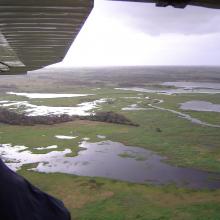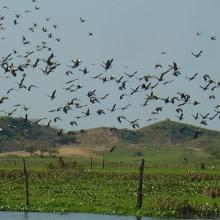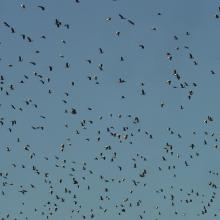






Humedales de la Laguna La Popotera
- Country:Mexico
- Site number:1462
- Area:1,975 ha
- Designation date:05-06-2005
- Coordinates:18°40'N 95°31'W
Materials presented on this website, particularly maps and territorial information, are as-is and as-available based on available data and do not imply the expression of any opinion whatsoever on the part of the Secretariat of the Ramsar Convention concerning the legal status of any country, territory, city or area, or of its authorities, or concerning the delimitation of its frontiers or boundaries.
Overview
Humedales de la Laguna La Popotera. 05/06/05; Veracruz; 1,975 ha; 18°40'N 095°31'W. An extensive site containing at least 24 wetland types and a large number of marshes, ponds, rivers and sand dunes combined with a thick mangrove forest. The estuarine nature of the waters make the site an ideal resting and breeding ground for numerous species. A total of 78 endangered or threatened species inhabit the area, among them the manatee (Trichechus manatus), river otter (Lontra longicaudis), and an endemic lizard species that resembles a snake (Ophisaurus ceroni). An estimated 300 species of waterfowl inhabit the area. Sugar cane agriculture, cattle ranching and poaching constitute the main potential threats to this site. Ramsar site No.1462. Most recent RIS information: 2005.
Administrative region:
Veracruz
- Last publication date:05-06-2005
Downloads
Ramsar Information Sheet (RIS)
Site map
Additional reports and documents
- Taxonomic lists of plant and animal species occurring in the site
